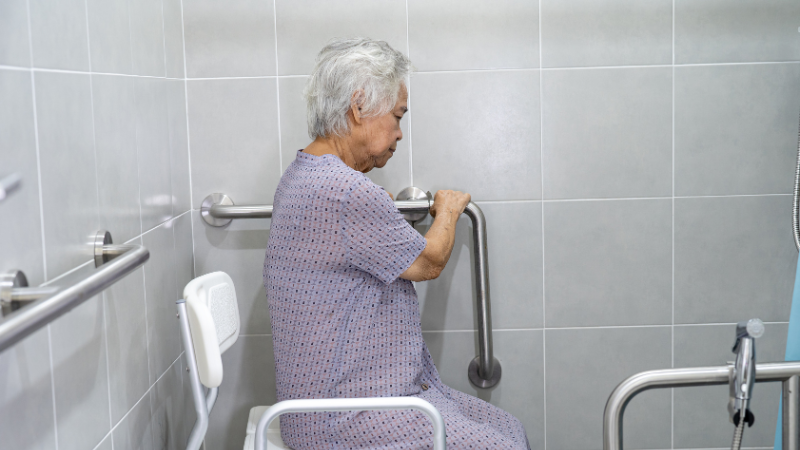In today’s rapidly changing world, ensuring the safety of our homes has become more critical than ever. With advancements in technology and a growing awareness of potential hazards, updating home safety features is no longer just an option but a necessity. Homeowners, whether new or seasoned, are increasingly prioritizing safety to protect their loved ones and property. In this article, we will explore various aspects of updating home safety features, providing practical tips and insights for homeowners looking to enhance their home’s safety.

The Importance of Updating Home Safety Features
Home safety is a fundamental component of maintaining a secure and comfortable living environment. By updating home safety features, homeowners can mitigate risks, prevent accidents, and ensure the well-being of everyone under their roof. As technology evolves, so do the methods and tools available to improve safety. From smart home technology to traditional security measures, there are numerous options to consider.
Understanding the Risks
Before diving into specific home safety features, it’s essential to understand the potential risks within a home. Common hazards include fires, break-ins, falls, and carbon monoxide poisoning. Identifying these risks allows homeowners to take targeted actions to address them effectively.
Essential Home Safety Features to Consider
When it comes to updating home safety features, it’s crucial to focus on areas that offer the most significant impact. Here are some key features to consider:
1. Smoke and Carbon Monoxide Detectors
One of the most critical safety upgrades is the installation of reliable smoke and carbon monoxide detectors. These devices provide timely warnings, allowing occupants to evacuate in case of a fire or gas leak. Ensure that detectors are strategically placed throughout the home and regularly tested to guarantee functionality.
2. Security Systems
Modern security systems offer a range of features from surveillance cameras to motion detectors. These systems not only deter potential intruders but also provide peace of mind. Consider integrating smart security systems that allow remote monitoring and control via smartphones.
3. Smart Locks and Video Doorbells
Smart locks and video doorbells are becoming increasingly popular among homeowners. They offer increased security by allowing homeowners to monitor and control access to their homes remotely. Video doorbells, in particular, provide a live feed of who is at the door, adding an extra layer of security. For more details, you can explore video doorbells.
4. Fire Extinguishers
Having accessible fire extinguishers in key areas of the home can prevent a small fire from escalating into a disaster. Ensure that everyone in the household knows how to use them and that they are regularly inspected.
5. Adequate Lighting
Proper lighting is essential for deterring intruders and preventing falls. Motion-activated lights are particularly effective in outdoor areas. Additionally, ensure that all pathways and staircases are well-lit to reduce the risk of accidents.
Advanced Home Safety Technologies
As technology advances, so does the potential for enhancing home safety. Here are some advanced technologies to consider:
1. Home Automation Systems
Home automation systems allow for the integration and control of various safety features from a central hub. This technology enables homeowners to manage lighting, security cameras, and alarms, enhancing overall safety and convenience.
2. Leak Detection Systems
Water damage can be costly and dangerous. Installing leak detection systems can help identify leaks early, preventing extensive damage. These systems often connect to a smartphone app, providing real-time alerts.
3. Smart Thermostats
While primarily designed for energy efficiency, smart thermostats can contribute to safety by monitoring air quality and alerting homeowners to potential issues, such as carbon monoxide leaks.
Regular Maintenance and Inspection
Regular maintenance and inspection of home safety features are crucial to ensure their effectiveness. Schedule routine checks of all safety devices, replace batteries as needed, and address any malfunctions promptly. For a detailed guide on maintaining a safe home, visit maintain a safe home.
Adapting Safety Features for Seniors
For homes with senior residents, additional safety considerations may be necessary. Features such as grab bars, non-slip flooring, and easy-to-reach switches can significantly enhance safety for seniors. For more insights, consider reading about senior-friendly home features.
Conclusion
Updating home safety features is an ongoing process that requires attention and commitment. By investing in the right safety measures and technologies, homeowners can create a secure environment for themselves and their loved ones. As we move forward, staying informed about the latest safety innovations will ensure that homes remain safe havens.

FAQs
1. How often should I update my home safety features?
It’s advisable to review and update home safety features annually or whenever there are significant technological advancements.
2. Are smart home devices secure?
Smart home devices are generally secure, but it’s essential to keep software updated and use strong passwords to protect against cyber threats.
3. What are the essential safety features for a senior-friendly home?
Essential features include grab bars, non-slip flooring, and easily accessible controls and devices.
This article contains affiliate links. We may earn a commission at no extra cost to you.

